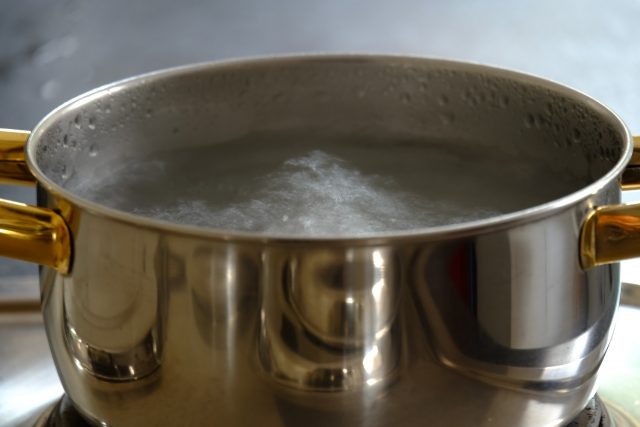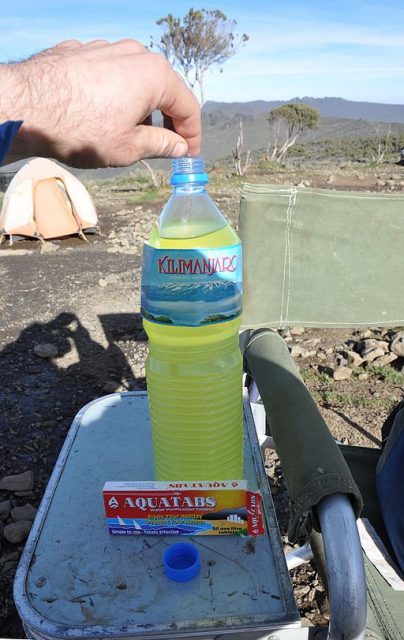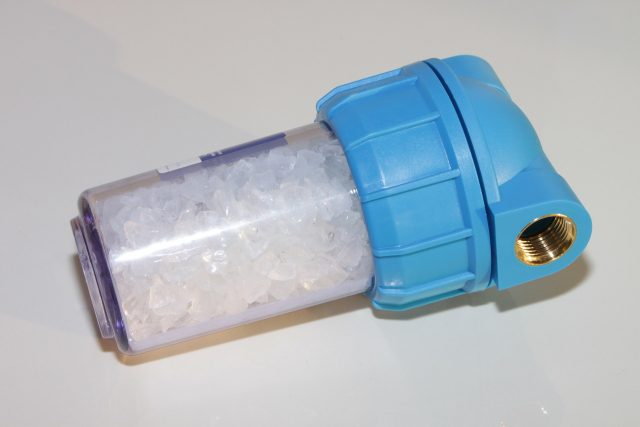Water for life
Since our bodies are 80% water, it is clearly the most important element necessary for our survival. We can survive for nearly a month without food, yet we would survive only a few days without water to drink. A pretty and fast flowing stream may look like a good source of drinking water, but BEWARE: it could be more life-threatening than life-saving!
Water in this state could be teeming with bacteria and microorganisms which could cause cramps, diarrhea or vomiting. In some places, you could even contract something more serious such as typhoid or cholera. Parasites such as leeches and flukes could also be present. There are three main ways in which to purify water that you find in streams, rivers, and lakes in the great outdoors.
Boiling

The first method is of course to boil the water. In order to do so, you first need a container in which to boil the water, a heat source such as a fire or a stove of some description and some fuel to keep it going. You will need to boil the water briskly for at least a minute (at higher altitudes you will need to boil the water for several minutes). This is surely the most effective way to cleanse water of organisms.
Water purification tablets
Another way to make water safe is to use water purification tablets. If you add one to the water and wait for about half an hour the water should be acceptable for consumption. Check the instructions on the packaging as the process could take longer in colder weather. Of course, you will need to have packed some tablets in order to use this method, but they do have a limited shelf life so you will need to check they are still in date.
Iodine

Iodine used for purifying water can come in different forms: tablets, crystals, or tincture of iodine. It kills the bacteria by disrupting the ionic balance in the pathogenic cells. Iodine replaces the chemicals needed for the virus or bacteria to thrive with iodide ions.
The tincture is the red stuff your mom probably put on your wounds and scrapes when you were a kid. So, you probably remember the funny smell of iodine and the fact that it dyed your skin orange. Well, it does the same to the water, and if it’s used too much, it can be toxic. It’s not recommended for use by children, unless having previously consulted a doctor. Also, we suggest that you don’t use it as your primary method for purification water. First see what other options you have.
Unfortunately, however, this does not kill all organisms, and the method is not appropriate for pregnant women, people who are allergic to iodine or those who have thyroid problems.

If you carry with you a portable pump filter then the above method will be somewhat more effective. Iodine can alter the taste and it takes some time to work, especially if the water is cloudy. It is possible to first filter out the debris in the water using either a silk scarf or piece of fabric or even a paper coffee filter.
If you expect to be getting thirsty on your trip outdoors, it is a good idea to think ahead. Have these items to hand when you adventure in the great outdoors.
If you have any comments then please drop us a message on our Outdoor Revival Facebook page
If you have a good story to tell or blog let us know about it on our FB page, we’re also happy for article or review submissions, we’d love to hear from you.
We live in a beautiful world, get out there and enjoy it. Outdoor Revival – Reconnecting us all with the Outdoors.





